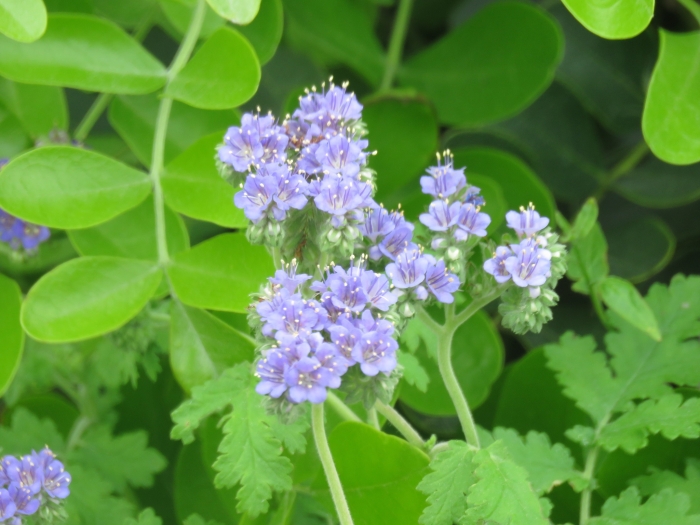Blue Curls
(Phacelia congesta)
Blue Curls (Phacelia congesta)
/
/

Laura Clark
CC BY 4.0
Image By:
Laura Clark
Recorded By:
Copyright:
CC BY 4.0
Copyright Notice:
Photo by: Laura Clark | License Type: CC BY 4.0 | License URL: http://creativecommons.org/licenses/by/4.0/ | Rights Holder: Laura Clark | Publisher: iNaturalist | Date Created: 2016-03-26T15:43:06-07:00 |



















































Estimated Native Range
Summary
Phacelia congesta, commonly known as Blue Curls or Caterpillars, is an annual or biennial herb native to diverse habitats including open woodlands, grasslands, and along stream banks in the Southwestern USA and Northern Mexico. It typically grows to a height of 1-3 feet (0.3-0.9 meters) and a width of 1-2 feet (0.3-0.6 meters). This plant features coiled clusters of small, bell-shaped flowers that are predominantly blue to violet, blooming profusely in the spring and attracting pollinators such as bees and butterflies.
Blue Curls is valued for its attractive floral display and its ability to thrive in a variety of garden settings, including wildflower meadows and informal borders. It is often used to provide a burst of spring color and can be effective in naturalized plantings. In cultivation, it prefers partial shade to full shade, consistent with its adaptation to dappled sunlight in its native habitat. While it tolerates medium amounts of water, it is also somewhat drought-tolerant once established. It is best grown in well-drained soils and can adapt to a range of soil types. Gardeners should be aware that Phacelia congesta can self-seed prolifically under favorable conditions, which may require management to prevent unwanted spread.CC BY-SA 4.0
Blue Curls is valued for its attractive floral display and its ability to thrive in a variety of garden settings, including wildflower meadows and informal borders. It is often used to provide a burst of spring color and can be effective in naturalized plantings. In cultivation, it prefers partial shade to full shade, consistent with its adaptation to dappled sunlight in its native habitat. While it tolerates medium amounts of water, it is also somewhat drought-tolerant once established. It is best grown in well-drained soils and can adapt to a range of soil types. Gardeners should be aware that Phacelia congesta can self-seed prolifically under favorable conditions, which may require management to prevent unwanted spread.CC BY-SA 4.0
Plant Description
- Plant Type: Herb
- Height: 1-3 feet
- Width: 1-1.5 feet
- Growth Rate: Moderate
- Flower Color: Purple
- Flowering Season: Spring
- Leaf Retention: Deciduous
Growth Requirements
- Sun: Part Shade, Full Shade
- Water: Medium
- Drainage: Medium
Common Uses
Bank Stabilization, Bee Garden, Bird Garden, Border Plant, Butterfly Garden, Deer Resistant, Drought Tolerant, Low Maintenance, Showy Flowers
Natural Habitat
Native to open woodlands, grasslands, and stream banks in the Southwestern USA and Northern Mexico
Other Names
Common Names: Blue Curls, Spike Phacelia, Huvudfacelia
Scientific Names: , Phacelia congesta, Phacelia congesta var. dissecta, Phacelia dissecta, Phacelia conferta, Eutoca menziesii var. congesta, Eutoca congesta, Phacelia congesta var. typica,
GBIF Accepted Name: Phacelia congesta (Douglas ex Lehm.) Hook.